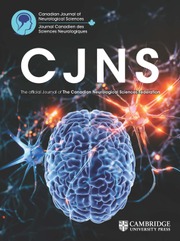Article contents
Tube Feeding in Stroke Patients: A Medical and Ethical Perspective
Published online by Cambridge University Press: 24 February 2017
Abstract:
Dysphagia, or difficulty swallowing, is a relatively common consequence following stroke, with most sources quoting rates of around 40%. The percentage of stroke patients who require tube feeding for nutritional support varies quite widely, with studies quoting rates in the acute phase from 8.5% to 29%. Since stroke patients are likely to constitute a high percentage of patients on a neurology or rehabilitation ward, neurologists and physiatrists are likely to be confronted with the sometimes challenging decision of whether and when to commence tube feeding and whether and when to discontinue it after it has begun. This decision-making process is likely to involve medical, ethical and legal considerations and the main purpose of this paper is to review these considerations and provide some practical recommendations.
Résumé:
La dysphagie, ou difficulté à avaler, est une conséquence relativement fréquente d'un accident vasculaire cérébral (AVC), le taux généralement rapporté étant d'environ de 40%. La proportion des patients ayant subi un AVC, qui ont besoin d'une alimentation par gavage comme mode de soutient nutritionnel, varie considérablement. Certaines études font état de taux variant de 8.5% à 29% en phase aiguë. Comme les patients porteurs d'un AVC constituent habituellement une proportion élevée des patients hospitalisés dans un département de neurologie ou de réadaptation, les neurologues et les physiatres sont fréquemment confrontés à des décisions difficiles à prendre: doit-on commencer l'alimentation par gavage, quand doit-on le faire et quand doit-on l'arrêter si on l'a commencée? Ce processus décisionnel comporte des aspects médicaux, éthiques et légaux. Le but principal de cet article est de revoir ces aspects et d'énoncer des recommandations pratiques.
- Type
- Review Article
- Information
- Copyright
- Copyright © The Canadian Journal of Neurological 2001
References
REFERENCES
- 12
- Cited by


